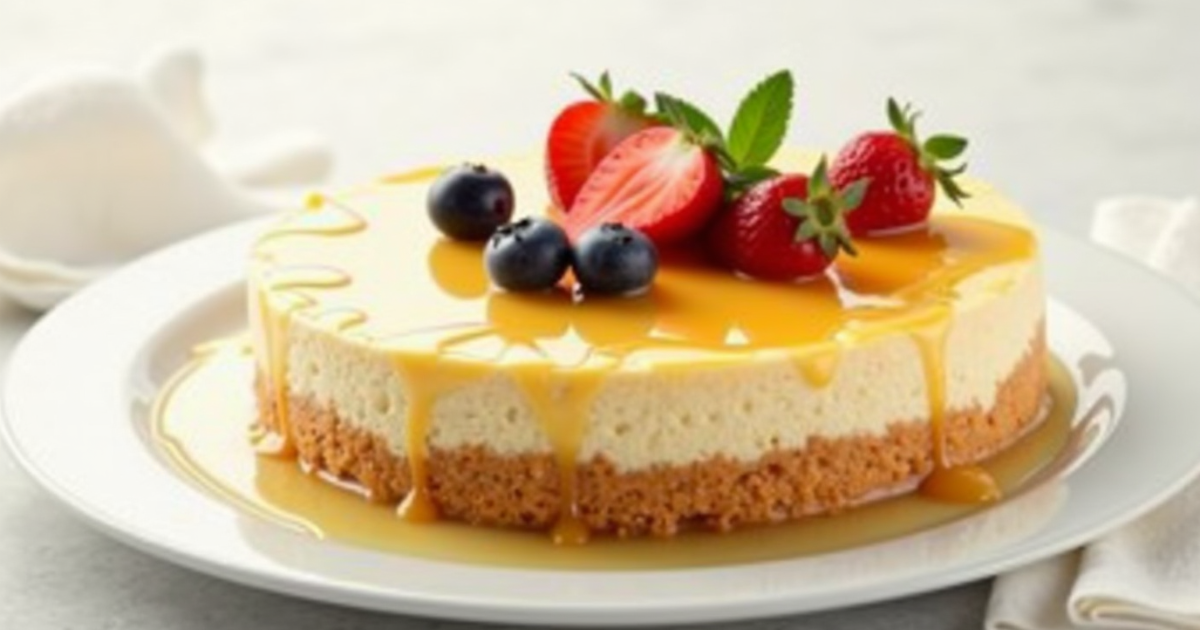Introduction
There’s nothing quite like a slice of perfectly smooth, creamy cheesecake. It’s rich, velvety, and melts in your mouth, making it one of the most beloved desserts worldwide. But have you ever tried making cheesecake at home only to end up with a lumpy, cracked, or overly dense result? Don’t worry—you’re not alone!
Cheesecake is one of those deceptively simple desserts. While it only requires a few basic ingredients, getting that flawless texture can be tricky. But once you know the secrets, you’ll be making bakery-quality cheesecake in your own kitchen. Plus, making it at home saves money and allows you to customize flavors to your liking.
If you love indulgent desserts, you might also enjoy our classic New York Cheesecake or No-Bake Chocolate Cheesecake—both favorites among our readers. Now, let’s dive into what makes cheesecake so special and how to master that silky-smooth consistency!
Table of Contents
What is Cheesecake?
Cheesecake isn’t actually a cake—shocking, right? It’s more like a rich custard baked on a buttery crust. The name itself can be misleading, but one thing’s for sure: it’s a dessert that wins hearts with every bite.
Did you know the first recorded cheesecake dates back to ancient Greece? It was even served to Olympic athletes for an energy boost! While today’s cheesecake has evolved significantly, the concept remains the same—creamy, dreamy goodness that never goes out of style. So, let’s learn how to make the smoothest cheesecake ever!
Why You’ll Love This Cheesecake
- Incredibly Creamy: This cheesecake is rich, smooth, and utterly indulgent.
- Budget-Friendly: Homemade cheesecake is much cheaper than store-bought versions.
- Versatile Toppings: From fresh berries to caramel drizzle, you can customize it to your taste.
How to Make Cheesecake

Quick Overview
This cheesecake is surprisingly simple to make! The key is following a few essential techniques to ensure a creamy texture and avoiding common pitfalls like cracks or lumps.
Key Ingredients
- Cream cheese (full-fat)
- Granulated sugar
- Eggs
- Sour cream
- Vanilla extract
- Graham cracker crumbs
- Butter
Step-by-Step Instructions
- Preheat the ovenGet a springform pan ready and heat it to 325°F (163°C).
- Make the crust by mixing graham cracker crumbs and melted butter. Bake for ten minutes after pressing into the pan.
- Prepare the batter by beating cream cheese and sugar until smooth. Add the sour cream and vanilla after adding the eggs one at a time.
- Pour the batter smooth the top over the crust.
- Bake in a water bath for about 55 minutes, then turn off the oven and let it cool gradually.
- Chill for at least 4 hours before serving.
What to Serve Cheesecake With
- Fresh berries and whipped cream
- A drizzle of chocolate or caramel sauce
- A cup of hot coffee or espresso
7 Secrets to a Perfectly Smooth Cheesecake
Cheesecake is one of the most decadent, rich, and creamy desserts. But achieving that flawless, velvety texture can be tricky. If you’ve ever ended up with a lumpy, cracked, or grainy cheesecake, don’t worry—you’re not alone! The good news? You can easily fix these issues by following a few key baking secrets. Let’s dive into the top seven secrets for a perfectly smooth cheesecake.
Secret #1: Use Room Temperature Ingredients
Cold cream cheese doesn’t mix well, leaving behind lumps in your batter. Make sure all ingredients—cream cheese, eggs, sour cream, and even butter—are at room temperature before mixing. This allows everything to blend seamlessly, creating a smooth, lump-free texture.
Tip: Take your ingredients out of the fridge at least 30–60 minutes before baking.
Secret #2: Do Not Overmix the Batter
Overmixing introduces too much air into the batter, leading to a cracked and grainy cheesecake. Instead, mix on low speed just until the ingredients are combined. Use a paddle attachment rather than a whisk to minimize air incorporation.
Tip: Scrape down the sides of the bowl frequently to ensure even mixing.
Secret #3: Use a Water Bath (Bain-Marie)
A water bath helps regulate the temperature, ensuring even baking and preventing the cheesecake from drying out.
How to Set Up a Water Bath:
- Wrap the bottom of your springform pan with heavy-duty foil to prevent water from leaking in.
- Place the pan inside a larger baking dish.
- Pour hot water into the baking dish until it reaches halfway up the sides of the cheese cake pan.
- Bake as directed, allowing the water to create steam for a creamy texture.
Secret #4: Choose the Right Cream Cheese
Not all cream cheeses are created equal! Full-fat, high-quality cream cheese will give you the best texture.
Avoid: Low-fat or spreadable cream cheese, as they contain additives that can affect consistency.
Secret #5: Bake at a Low Temperature
Baking your cheese cake too quickly at high heat can cause cracks and a rubbery texture. The ideal baking temperature is around 300°F to 325°F (150°C to 160°C). This slow bake ensures an even, creamy consistency.
Tip: Avoid opening the oven door too often, as temperature fluctuations can cause cracks.
Secret #6: Let It Cool Gradually
Your cheese cake may crack if the temperature changes much. Once your cheese cake is done, turn off the oven and let it sit inside with the door slightly open for about an hour before transferring it to the counter.
Tip: Run a knife around the edges of the cheese cake while it’s still warm to prevent cracking as it cools.
Secret #7: Chill Overnight Before Serving
A cheese cake fresh out of the oven won’t have the right texture—it needs time to set! Chilling it in the fridge for at least 6–8 hours (preferably overnight) enhances its creamy, smooth consistency.
Tip: Store your cheese cake uncovered for the first few hours, then cover it to prevent moisture buildup.
Storing and Reheating Tips
- Keep in the refrigerator for up to five days.
- Freeze slices individually for up to 3 months.
- Reheat gently in the microwave or let it sit at room temperature.
Conclusion
Now that you know the secrets to a perfectly smooth cheese cake, there’s no reason to settle for anything less than perfection! Follow these tips, and you’ll have a creamy, delicious cheese-cake that impresses every time. Try this recipe and share your results with us!
FAQs
1. Why did my cheese-cake crack?
Overbaking or skipping the water bath can cause cracks. Always let it cool gradually.
2. Can I use low-fat cream cheese?
Full-fat cream cheese gives the best texture, but you can try a mix of full-fat and low-fat.
3. Can I make cheese-cake without a water bath?
Yes, but it might be more prone to cracks. Try placing a pan of hot water on the rack below instead.
